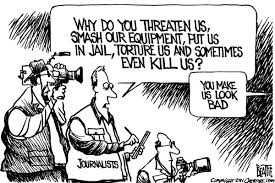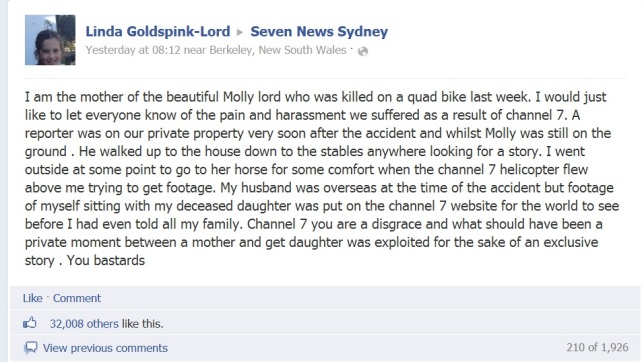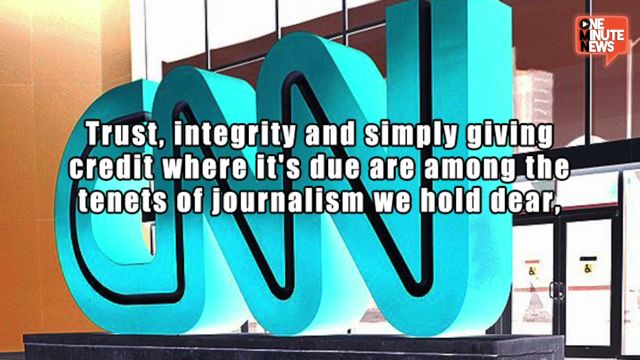
The nature of journalism – image from: http://opinion.latimes.com
“Privacy Within Journalism – Does it Even Exist?”
Within today’s tech savvy society, people are able to access news stories with much more ease, allowing them to upload photos on media platforms such as Facebook, Twitter and Instagram a lot faster. As reported in The Australian’s post, “In the past 10 years the media has changed more rapidly than any large-scale global industry and the area most changed is news gathering and reporting.” Invasion of privacy by journalists is a very large issue, especially within today’s society, where it is occurring more than ever before.
For example, a parents’ worst nightmare was confirmed for Peter Lord and Linda Goldspink-Lord, whose 13-year-old daughter, Molly Lord, was tragically killed in a quad-biking accident in 2012. The media immediately swarmed the property to capture footage of the tragedy, and it was reported via the Crikey website’s post that Seven Network was “flying low in a helicopter and using a long lens to capture images of the family grieving over the deceased teenager’s body.” It was also reported via the Daily Telegraph’s post that a number of journalists trespassed on the family’s property to gain access to further footage.
Molly’s mother took to Seven Network’s Facebook page to express her distress over the filming of such a horrible, and extremely private, moment. She stressed that Seven captured footage of her huddled over her deceased daughter. Seven aired this footage on their daily news program, before Molly’s mother even had the chance to inform her relatives. The Facebook post was later removed by Seven, who claimed that it was “removed in error.”

Molly Lord’s mother, Linda Goldspink-Lord, took to posting on Network Seven’s Facebook page to express her disgust over their conduct during the worst time of her life.
Molly’s parents sued Seven Network, the Illawarra Mercury and WIN News for their actions. These media organisations initially denied said allegations, which can be viewed via the Daily Telegraph’s post. Seven argued that “filming and broadcasting of images did not give rise to any compensable loss.” Meanwhile, WIN News argued that “the broadcast exposed a public safety issue in the danger of quad bikes by children.” These media organisations eventually apologised to the family, which can be viewed via the Crikey website’s post, when they “admitted their reporting caused great distress to the Lord family and they should have shown more sensitivity.” Meanwhile, the Australian’s post reported that Seven had yet to apologise for their insensitivity, while Sydney Morning Herald’s post recounted that Seven had apologised via their Facebook page. These journalistic pieces contrast and display different information, which is also an integral issue in journalism.
A further example of invasion of privacy as an issue in journalism is the incident of the two Dutch journalists who were on trial for allegedly invading the privacy of an escaped Nazi War Criminal, Heinrich Boere in 2012. These two journalists were later released from the charges, but the allegations remained that they used a hidden camera to film their interview with Boere. These issues, and the events that followed Molly Lord’s tragic death, demonstrate the ongoing issue of ethics and privacy invasion in journalism and the unknown events that occur thereafter.


